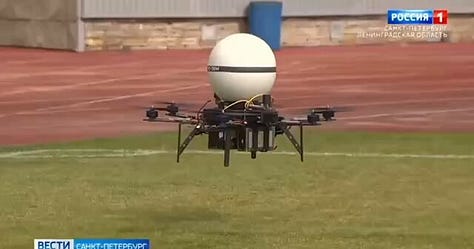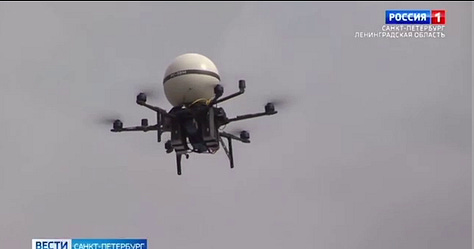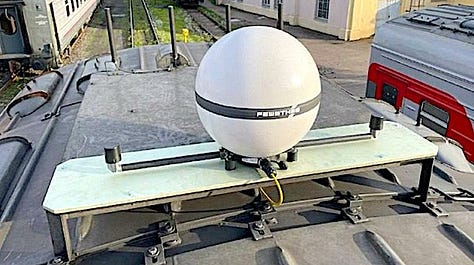Note: The following text was originally posted on my X/Twitter account.
This Russian human-in-the-loop multirotor drone is equipped with a satellite communication (SATCOM) system to facilitate beyond-line-of-sight use and overcome lateral line-of-sight restrictions imposed by terrain and human structures. The SATCOM system in question is not a low-latency, high-bandwidth proliferated low Earth orbit (LEO) satellite constellation like Starlink. This Russian drone is instead controlled via a Russian communications satellite—reportedly the French-built Yamal-601 owned and operated by Gazprom Space Systems—in geostationary orbit (GEO). The white dome houses an RS-30M satellite antenna (images 3-4).



While GEO SATCOM can be productively employed in any number of roles, its comparatively low latency makes it less practical as a communication uplink/downlink for rather fast and nimble remotely operated ("FPV") multirotor drones in combat roles. The unavailability/restricted access of LEO SATCOM in the form of Starlink to the Russian military has resulted in a fundamental asymmetry in the (practical) technological possibilities afforded to Russian and Ukrainian designers. As Starlink becomes available in an increasing number of countries and as other LEO SATCOM providers become widely accessible, we are likely to see a levelling of the playing field in conflicts worldwide.

